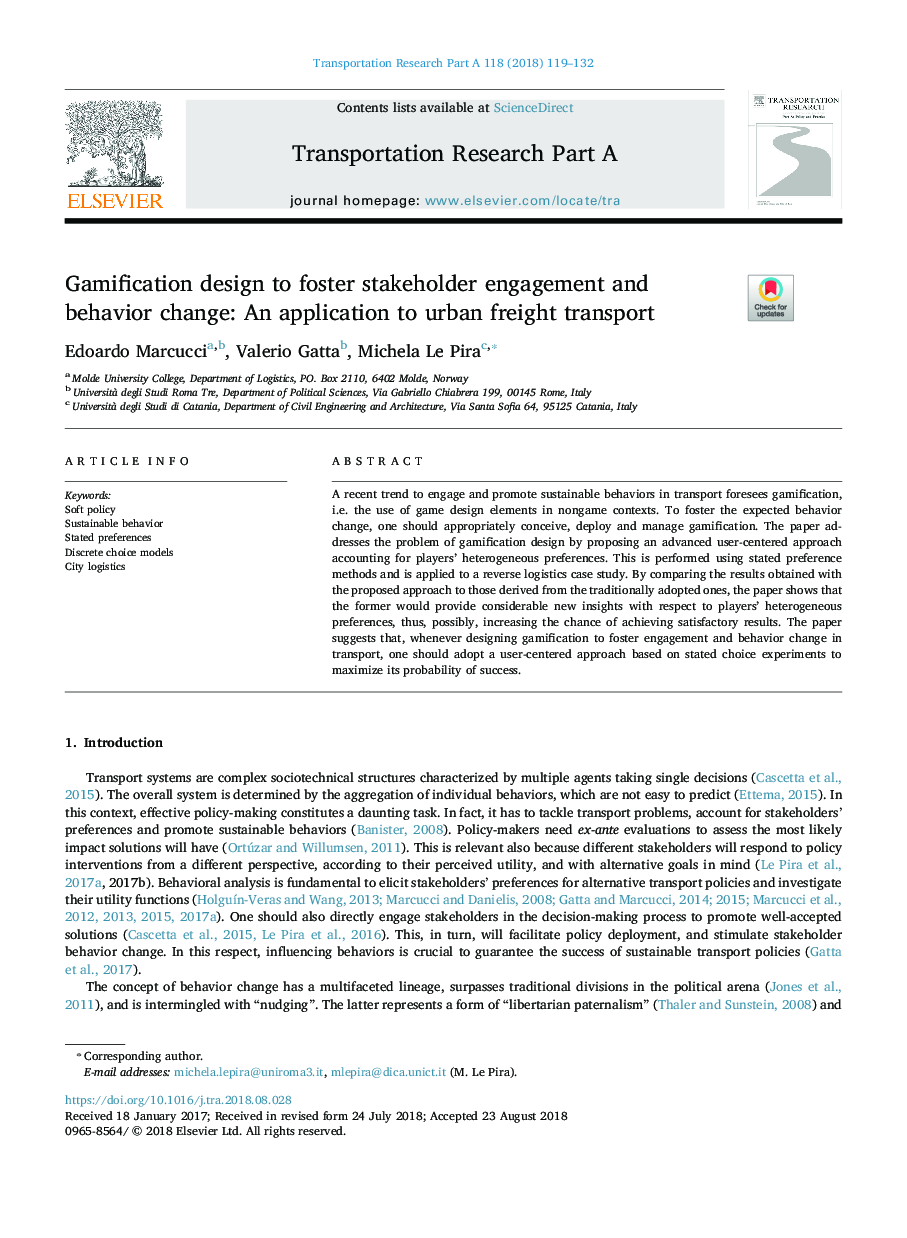| Article ID | Journal | Published Year | Pages | File Type |
|---|---|---|---|---|
| 10145875 | Transportation Research Part A: Policy and Practice | 2018 | 14 Pages |
Abstract
A recent trend to engage and promote sustainable behaviors in transport foresees gamification, i.e. the use of game design elements in nongame contexts. To foster the expected behavior change, one should appropriately conceive, deploy and manage gamification. The paper addresses the problem of gamification design by proposing an advanced user-centered approach accounting for players' heterogeneous preferences. This is performed using stated preference methods and is applied to a reverse logistics case study. By comparing the results obtained with the proposed approach to those derived from the traditionally adopted ones, the paper shows that the former would provide considerable new insights with respect to players' heterogeneous preferences, thus, possibly, increasing the chance of achieving satisfactory results. The paper suggests that, whenever designing gamification to foster engagement and behavior change in transport, one should adopt a user-centered approach based on stated choice experiments to maximize its probability of success.
Related Topics
Physical Sciences and Engineering
Engineering
Civil and Structural Engineering
Authors
Edoardo Marcucci, Valerio Gatta, Michela Le Pira,
